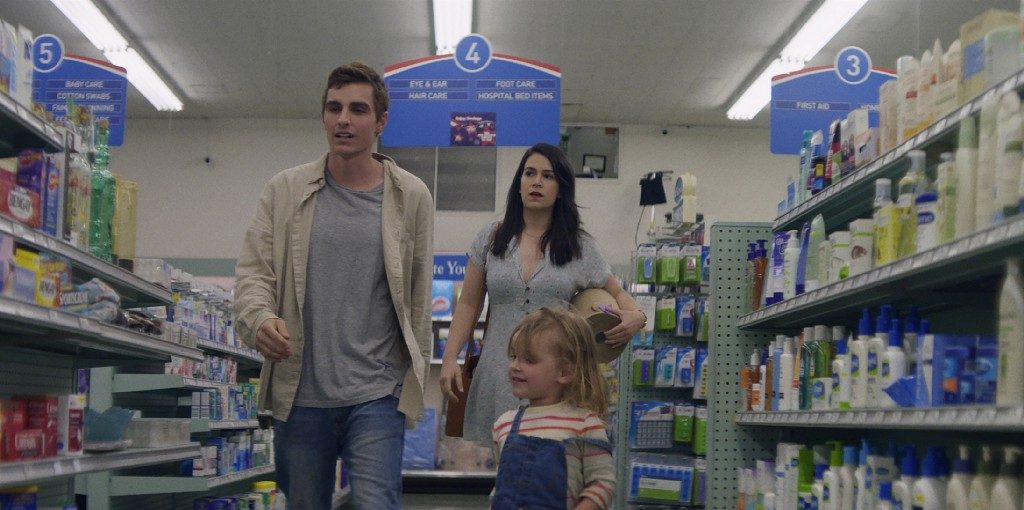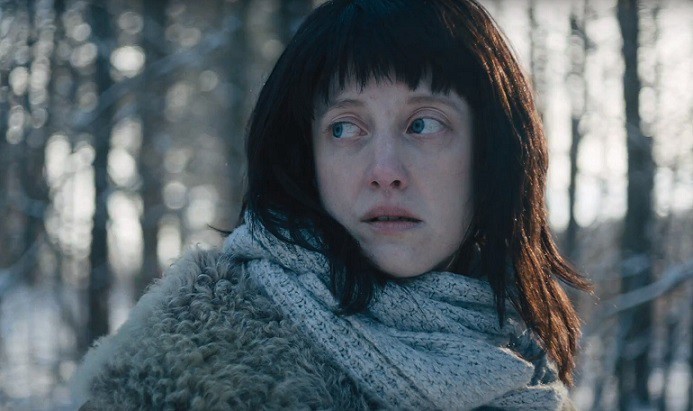Marja-Lewis Ryan wrote, produced, and starred in the indie feature “The Four-Faced Liar.” In TV, she is slated to create the new “The L Word” series for Showtime, and a one-hour untitled college drama for Amazon. In film, she is writing an untitled feature for Sandra Bullock based on the actor’s life, Disney’s “Splash” reboot, and Fox Searchlight’s “Buried Bodies.”
“6 Balloons” premiered at the 2018 SXSW Film Festival on March 12.
W&H: Describe the film for us in your own words.
MLR: “6 Balloons” is about a sister (Abbi Jacobson) who, over the course of one night in Los Angeles, does everything in her power to get her heroin-addict brother (Dave Franco) to detox. At its emotional core, it’s about a woman who gives up her own happiness to save someone else until she realizes that there is another, better way to love someone.
It’s a pinprick in the untold fallout of the opioid crisis.
W&H: What drew you to this story?
MLR: A few years ago, my producer — and one of my closest friends — Samantha Housman experienced a night with her brother and niece that was not unlike the night depicted in my film. I knew I wanted to tell her story.
The opioid crisis has ravaged my generation, and the addict always seems to end up in the center of that narrative but the truth, of course, is that there are far more enablers than addicts, and I haven’t really heard their stories. I thought that perspective needed to be explored.
W&H: What do you want people to think about when they are leaving the theater?
MLR: I want people who see themselves in the protagonist Katie, or [for those] who see their family’s struggles in this story to feel less lonely. And I want people who can’t believe anyone would ever buy heroin for their loved one or let them shoot up near a child to reconsider what their neighbors, friends, family members, or someone they know, might be going through. I want people to be less lonely and more empathetic.
W&H: What was the biggest challenge in making the film?
MLR: You would think it would be three-year-old twins at night but I think it was filling a car up with water. We had three identical cars that were all specifically outfitted for different purposes. One hero car that never got wet, one that got filled practically on the street, and had a door that opened so I could get that last shot, and then one that we completely submerged in a giant outdoor tank. At one point, the one that we drove got stolen.
W&H: How did you get your film funded? Share some insights into how you got the film made.
MLR: Samantha Housman and I started development on the script in January of 2016. I remember sitting on the floor in my apartment, drinking beers, and reading through drafts together. After about five months of that, Sam and I met with Netflix. I put together a lookbook, we sat down, and they bought it in the room.
It was definitely one of those moments where Sam and I were like, “Don’t say anything else, don’t turn around, don’t smile, don’t do anything that might make them take back their ‘yes’.” And then we made it out of the building and screamed. It was a pretty magical moment.
About four months after that meeting, we were shooting.
W&H: What does it mean for you to have your film play at SXSW?
MLR: The story, and the process of making this film, has been a real labor of love for Sam and I. For professional reasons, playing at SXSW is very redemptive. Sam and I made our first movie (“The Four-Faced Liar”) together eight years ago, and it premiered at Slamdance, and I remember waiting to hear if SXSW would program it — they didn’t, and we were so bummed.
Then a couple years ago, I made a movie for Timur Bekmambetov (“Liked”), and I was sure SXSW would program that film, and they passed on that too. So this is my third attempt, and it is by far the biggest thing I’ve ever done. It is just so satisfying to feel like we really fought to get here and we made it.
And then on a personal level, since the day that Sam gave me her blessing to write this very deeply personal story, I have always dreamed of standing next to her on a stage in front of people who have, in a way, born witness to her life.
I am so grateful to SXSW. Sam and I — and a shit-ton of other extremely talented, dedicated people — made this movie, and we are stoked to share it at SXSW.
W&H: What’s the best and worst advice you’ve received?
MLR: The best professional advice I ever got was to make your own work. I’ve made three features, and a half dozen plays, and I haven’t figured out any other way to get better at something than to do it a lot.
Worst advice? I can’t think of any. I probably didn’t listen.
W&H: What advice do you have for other female directors?
MLR: I want all filmmakers to remember that ambition and outreach are not mutually exclusive. No matter where you are in your career, there’s always someone in front of you and someone behind you. And yes — we should always reach forward but we also need to reach back. Be aware of your own potential blind spots.
I’ve had lots of moments of reckoning over the course of my career. I started out determined to write roles for women but on my first film — while it did feature two female leads — I realized afterward that I had a nearly all male crew. Next project, I had women in front of the camera and behind it. But then I realized that they were almost all white.
I don’t know what I’ll realize when I look back on my work now but I know enough to know that it’ll be something. I think it’s OK to fail. It’s great even. But I don’t think it’s OK to remain stagnant.
W&H: Name your favorite woman-directed film and why.
MLR: “Home for the Holidays,” directed by Jodie Foster. I saw that movie when I was like 10 years old and had no idea what a director even was. That whole movie felt so real to me. It’s pretty fascinating to look back and try to understand how, even as a kid, I was drawn to the gaze of a queer woman.
W&H: Hollywood and the global film industry are in the midst of undergoing a major transformation. Many women — and some men — in the industry are speaking publicly about their experiences being assaulted and harassed. What are your thoughts on the #TimesUp movement and the push for equality in the film business?
MLR: There isn’t enough time or space for me to answer this question with the thoughtfulness and thoroughness that it deserves. But one part is: I am grateful to the women who have spoken out. There has been a remarkable shift throughout the industry. It’s palpable. And the survivors who spoke out have changed all of our lives.
I look forward to continuing to work with all genders of people who know that creativity is born and bred in safe places. If you don’t feel safe, you cannot dream. And if you can’t dream, how the fuck are you supposed to make anything worthwhile?







